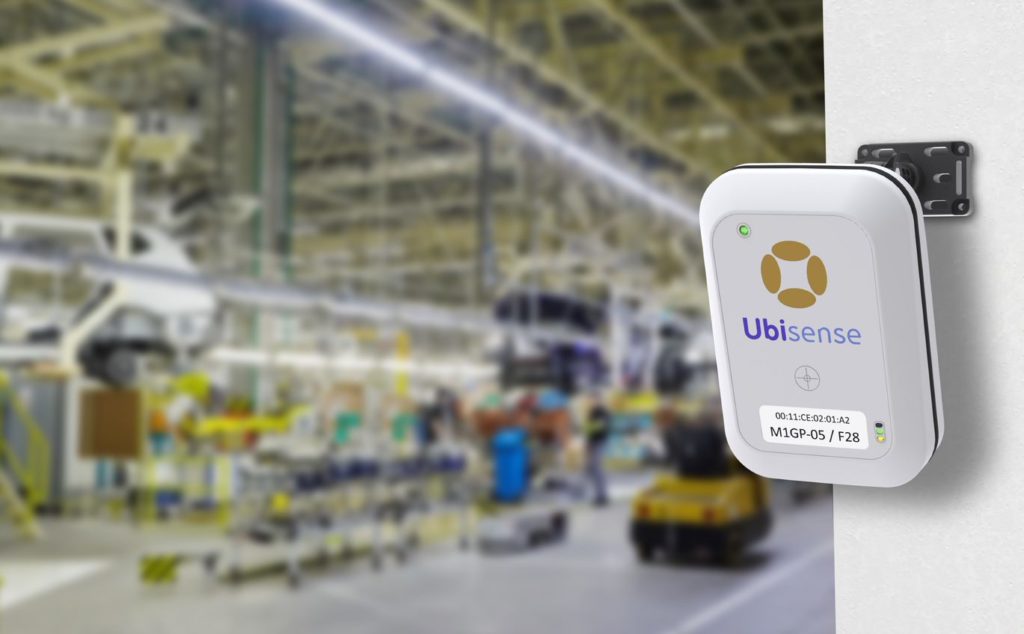Location Systems, often called Real-Time Location Systems (RTLS), are becoming more popular in both private and industrial settings. Products like the Apple AirTag have brought location systems into the public consciousness and have made many people wonder how similar technology might benefit their businesses. When operating across a large site with many moving parts including inventory, machinery, vehicles, tools, devices, and personnel, it is natural for assets to go missing, causing disruption. This problem is being addressed by location systems in the automotive, aerospace, logistics and manufacturing industries, and is now becoming more common in healthcare, military, and mass transit settings.
But what is the technology these enterprises are using? And what are the benefits of tracking assets for accurate indoor positioning.

Use Cases for Location Systems Indoors
While there are many RTLS use cases beyond simply locating objects (such as process optimization, gate keeping, worker safety, automation, machine monitoring etc) being able to reduce search time for missing assets is one of the core functions of any location system. Some of the common use cases across a variety of industries are laid out below:
Industrial
Missing parts are one of the more common errors in auto plants and aerospace MRO operations. Parts are often delivered to the wrong workstations, slowing down production, and creating the need for workers to walk between workstations. Tracking all parts and kits can allow for more seamless production.
Tools are often shared between workstations and require careful management to ensure they are in the right place when they are needed. By tracking key tools, one can ensure they are returned to the stores at the end of each shift, and reports can automatically be sent to tool managers at the end of each shift.
Avoid incorrect option fittings by tracking all products and the tools and workstations they approach. Each product can be tagged with unique identifiers, so alerts will be sent to employees if they are at risk of an incorrect fitting, reducing rework instances.
Transit
Locating vehicles can be a daily time waster in many mass transit depots. As vehicles arrive on-site, they are often parked according to a specific schedule, based on their needs and their required proximity to resources such as fueling stations. When unforeseen circumstances occur, elaborate shuffling of vehicles occurs, which can lead vehicles to being misplaced. Tracking devices allow site managers to instantly locate vehicles and determine their status.
Locating staff can also be difficult within large transit hubs. Shortwave radios are of ten used for this purpose, but due to noise, signal failure, and a lack of specificity when used, these radios are often inefficient. By adding special tags to worker’s devices or to lanyards, managers can track where workers are on a site, ensuring they are deployed to vehicles in a timely manner. This is particularly important when understaffed.
Healthcare
Expensive equipment is often in heavy demand in hospitals and requires moving from locatiin to location. By tagging certain machines and devices, one can not only reduce search time but one can ensure against theft and can create accountability around damage to equipment.
Tracking patients can allow for a more streamlined system, allowing for doctors and nurses to manage their time more effectively, in the knowledge that patients are either waiting for them, or ar still occupied in another part the facility.
Tagging wheelchairs and care beds is a common use case as they are often go missing within large facilities.
Logistics
Tracking electronic manifests allows warehousing facilities to ensure the correct vehicles are sent to the correct dock doors, allowing staff to load and unload vehicles in a timely manner.
Tagging inventory is crucial in any warehousing environment, but tracking items from warehouse, to their transport, and approving their departure from a facility can all be achieved with a single location system. Management can ensure that inventory is never shipped incorrectly.
This is only a short list of some of the more common ways in which an RTLS can help find missing items in a commercial setting. As businesses deploy location systems, they will often find their own, unique use cases as they attempt to deepen their cost savings.
Different Types of Indoor Location Systems
These are several common types of location systems used for indoor environments. They usually require some “active” tag technology – which emits signals, some sensors – to pick up those signals, and some software – to collate and display the resulting data. The most common types of system are:
BLE (Bluetooth Low Energy): These use the same Bluetooth technology used in phones and laptops. They are useful for setting up a low-cost system that can incorporate Bluetooth enabled devices but are less good at precision tracking tasks like accurate parking, tool calibration, and machine inspection.
Wi-Fi: One can make use of the current Wi-Fi system deployed in a working environment for cheap, non-crucial tracking tasks. Wi-Fi can be used effectively for certain gate keeping operations and to track more general locations of objects, but they are more prone to interference and inaccurate data.
UWB (Ultra-wideband): These systems offer the greatest level of accuracy and operate using radio signals that are far less prone to interference. They can often operate with fewer sensors than competing systems and can even locate objects in three dimensions, which can be useful in precision tasks.
If you have any questions regarding location systems for an indoor environment, feel free to contact us for a free consultation.
Your Content Goes Here
